Traditional PCBs have rigid structures, making them suitable for use in products with fixed designs. However, with the need for more complex and compact electronic devices, flexible PCBs have emerged as a solution to meet these requirements.
A flexible PCB can be bent, twisted, or folded without damaging the circuitry. These PCBs are made using flexible materials, such as polyimide or polyester, and are widely used in various applications such as consumer electronics, aerospace, medical devices, and automotive industries [1].
In conclusion, the development of flexible PCBs has revolutionized the electronics industry by providing a new level of design freedom and flexibility. FPCBs are a crucial component in the development of wearable devices, medical devices, and automotive applications, and their popularity is only set to increase as more manufacturers adopt these technologies.
What Is a Flex PCB?
They are made using flexible materials, such as polyimide or polyester, which can withstand high temperatures and provide excellent electrical insulation. Flexible PCBs are widely used in various applications, including consumer electronics, medical devices, automotive, and aerospace industries.
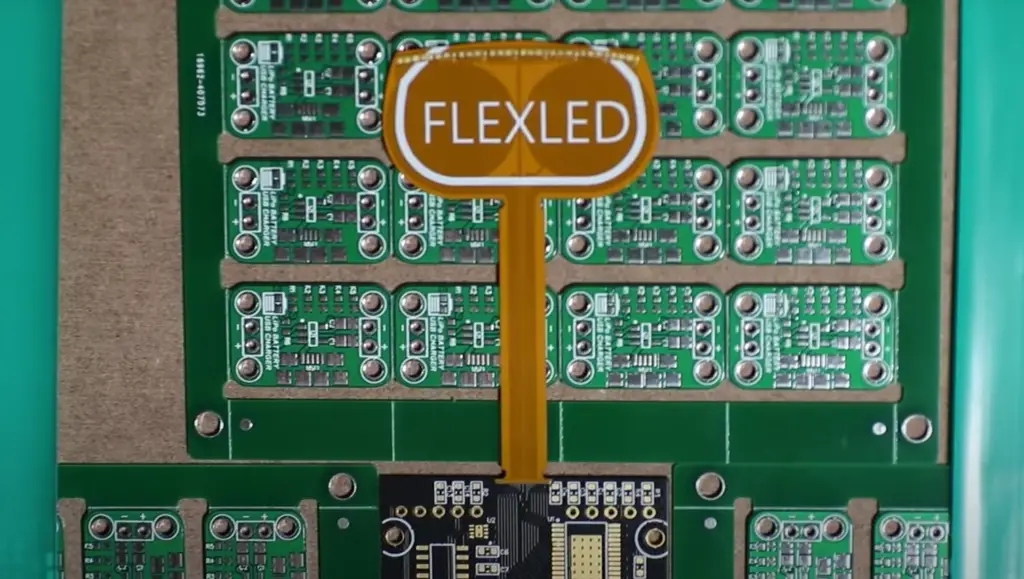
The flexibility of a PCB offers several advantages over rigid PCBs:
- Firstly, they can be manufactured in a variety of shapes and sizes, making them suitable for use in devices with irregular shapes or in applications where space is limited;
- Secondly, their ability to bend and flex allows for easy integration into products with moving parts, reducing the need for connectors and additional cabling;
- Thirdly, flexible PCBs are more reliable than their rigid counterparts as they are less prone to damage caused by vibration and shock;
- Additionally, they have a higher resistance to heat, moisture, and other environmental factors, making them ideal for use in harsh environments;
Despite their many advantages, flexible PCBs do have some limitations. For example, they may not be as durable as rigid PCBs and may require additional protection from physical damage. They may also be more difficult to manufacture and may require specialized equipment and expertise. Nevertheless, flexible PCBs have proven to be a valuable technology in many industries and are expected to continue to grow in popularity as electronic devices become smaller and more complex.
The Structure Of A Flexible PCB
Flexible PCBs (FPCBs) have a unique structure that sets them apart from traditional rigid PCBs. FPCBs are made up of several layers of flexible materials, including a substrate, copper traces, and insulation layers. These layers are then laminated together to form a complete circuit [2].

The substrate is the base material of the FPCB, and it provides the foundation for the circuit. The substrate material used in FPCBs is typically a flexible polymer, such as polyimide or polyester, that can bend and flex without breaking. The substrate material is selected based on the specific requirements of the circuit, such as the operating temperature range and the flexibility needed.
Copper traces are used to create the electrical connections between the components on the FPCB. Copper is an excellent conductor of electricity and is a popular choice for making traces. The copper is typically laminated onto the substrate using an adhesive layer and can be patterned to create the desired circuit layout.
Insulation layers are used to separate the copper traces and prevent short circuits. Insulation layers can be made from a variety of materials, including polyimide, polyester, or LCP. These materials offer excellent electrical insulation properties and can withstand the temperature and flexing requirements of the FPCB.
The number of layers in an FPCB can vary depending on the complexity of the circuit. FPCBs can have a single layer or multiple layers, with each layer adding additional copper traces and insulation layers. Multiple layers are typically used in more complex circuits, allowing for a higher density of components and more extensive routing options.
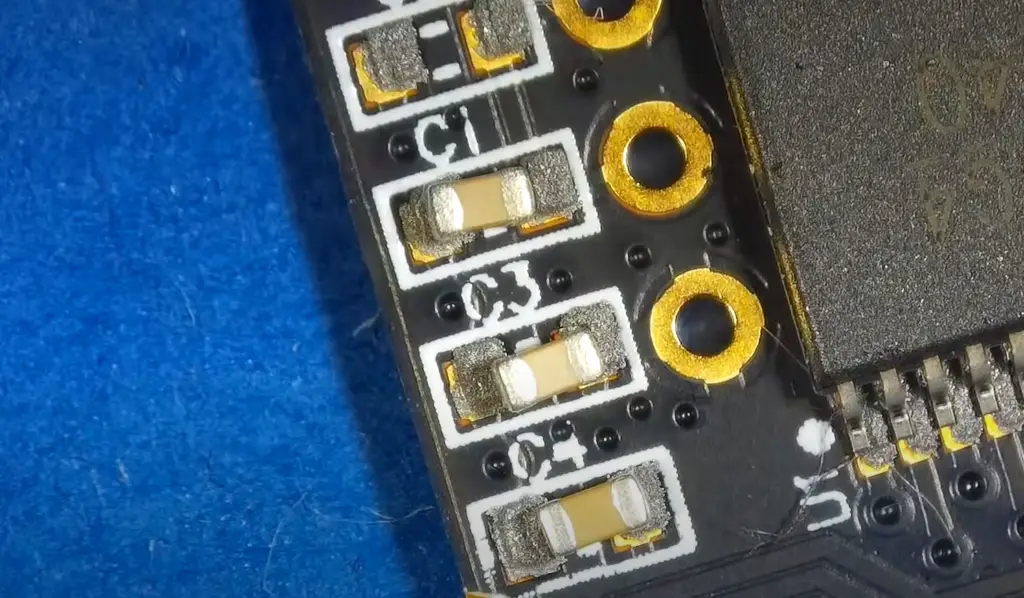
Materials Used in Flex Circuits:
Conductors
Conductors are the most critical material used in flexible circuits. Conductors are used for creating the electrical connections between components on the circuit. Copper is the most commonly used conductor material in flex circuits due to its excellent conductivity and cost-effectiveness. Copper can be applied to the flex circuit in a variety of ways, including etching, electroplating, or deposition. Gold is another popular conductor material used in flexible circuits due to its excellent corrosion resistance and conductivity.
Adhesives
Adhesives are used in flexible circuits to bond the different layers together. Adhesives can be made from a variety of materials, including epoxy, acrylic, and polyurethane. The adhesive used in a flexible circuit is typically selected based on the desired flexibility, adhesion strength, and operating temperature range. The adhesive must be able to withstand the flexing and bending of the circuit without breaking or cracking.
Insulators
Insulators are used in flexible circuits to separate the conductive layers and prevent short circuits [3].
Insulators can be made from a variety of materials, including:
- Polyimide is the most commonly used insulator material in flex circuits due to its excellent thermal stability, chemical resistance, and dimensional stability;
- Polyester is a more cost-effective option, but it has lower thermal stability and dimensional stability than polyimide;
- LCP is a high-performance material with excellent mechanical and electrical properties, but it is more expensive than polyimide and polyester;
Finishes
Finishes are used in flexible circuits to protect the conductive traces from oxidation and corrosion. Finishes can be applied to the copper traces to improve their performance and durability.
Common finishes used in flexible circuits include:
- Tin is a cost-effective finish that provides excellent corrosion resistance, but it has poor wear resistance;
- Nickel is a more durable finish that offers excellent wear resistance and corrosion resistance, but it is more expensive than tin;
- Gold is the most expensive finish but provides the best performance, offering excellent wear resistance and corrosion resistance while maintaining excellent conductivity;
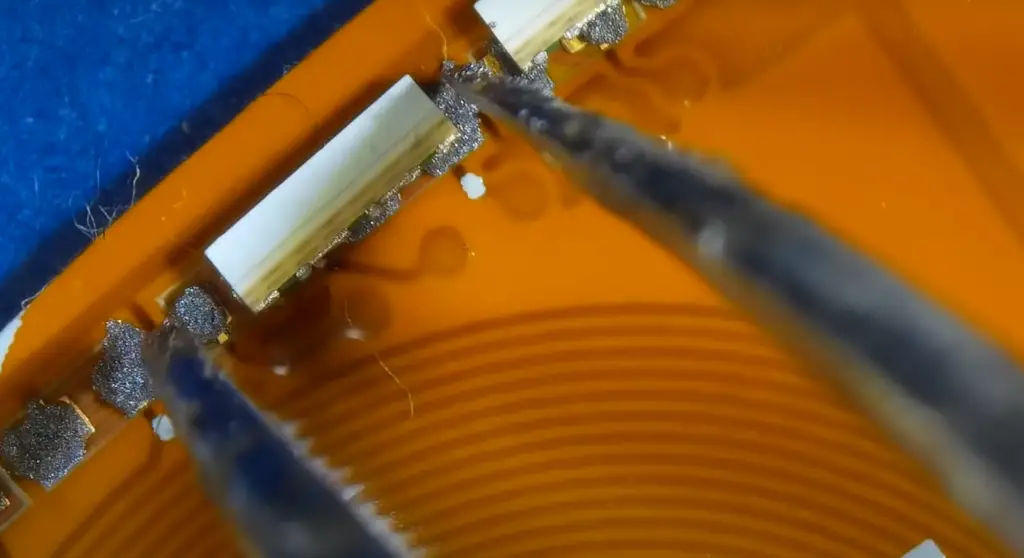
Types of Flexible PCB:
1) Single-Sided Flexible Circuits
These circuits can be designed with various shapes and sizes, making them ideal for applications that require flexibility or irregular shapes.
Single-sided flexible circuits can be used in a wide range of applications, including consumer electronics, medical devices, and automotive systems. They are particularly well-suited for applications that require a low-cost, lightweight, and compact design.
2) Double-Sided Flexible Circuits
Double-sided flexible circuits consist of two layers of conductive material separated by a layer of insulating material, with each layer bonded to a flexible substrate material. The conductive layers can be connected using through-holes or vias, allowing for more complex circuit designs.
Double-sided flexible circuits are ideal for applications that require more complex circuitry or higher component density. They are commonly used in medical devices, automotive systems, and aerospace applications, among others.
3) Multi-Layer Flex Circuits
Multi-layer flex circuits consist of three or more layers of conductive material separated by layers of insulating material, with each layer bonded to a flexible substrate material. The conductive layers are connected using through-holes or vias, allowing for even more complex circuit designs.
Multi-layer flex circuits are ideal for applications that require high component density, complex circuitry, and high-speed data transfer. They are commonly used in telecommunications equipment, computer hardware, and aerospace systems.
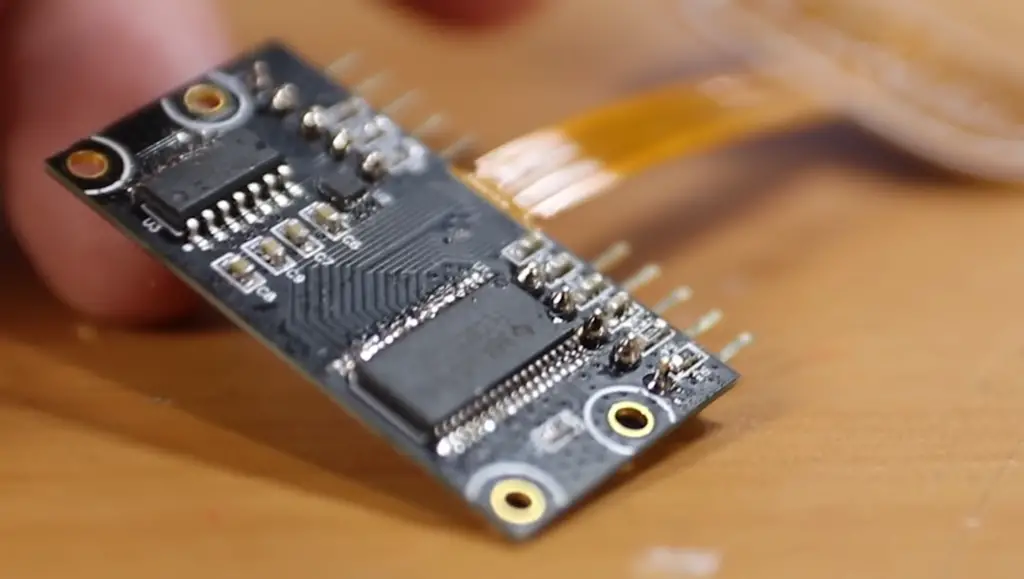
4) Rigid-Flex Circuits
Rigid-flex circuits consist of a combination of rigid and flexible PCBs that are bonded together to form a single circuit. The rigid sections of the circuit provide mechanical support and stability, while the flexible sections allow for flexibility and movement.
Rigid-flex circuits are ideal for applications that require both flexibility and stability, such as wearable technology, medical devices, and aerospace systems. They are also commonly used in applications that require high component density and complex circuitry [4].
Applications of Flex PCB:
Commercial Electronics
Flexible PCBs are widely used in commercial electronics, including smartphones, tablets, and wearable technology. Their flexibility allows them to conform to the shape of the device, making them ideal for applications where space is at a premium. In addition, flexible PCBs offer several advantages over traditional rigid PCBs in terms of reliability and durability. They are less prone to failure due to vibration and shock, and they are less likely to break or crack when subjected to stress or impact.
Flexible PCBs are also commonly used in electronic displays, including LED displays and touch screens. Their flexibility allows them to be bent and shaped to fit the display, and their lightweight design makes them ideal for use in portable devices.
Automotive
Flexible PCBs are becoming increasingly popular in the automotive industry due to their ability to withstand extreme temperatures, vibration, and shock. They are used in a wide range of automotive applications, including engine control units, airbag sensors, and lighting systems.
Flexible PCBs are also used in car entertainment systems, including audio and video systems, as well as in dashboards and instrument panels. Their flexibility allows them to conform to the shape of the dashboard or instrument panel, and their lightweight design makes them ideal for use in portable devices.
Aerospace
Flexible PCBs are used in a wide range of aerospace applications, including navigation and communication systems, flight control systems, and engine control units. Their ability to withstand extreme temperatures, vibration, and shock makes them ideal for use in the harsh environment of space.
Flexible PCBs are applied in satellite systems and space probes. Their lightweight design and flexibility allow them to be easily integrated into the small, compact designs required for these types of applications.
Medical Devices
Flexible PCBs are becoming increasingly popular in medical devices due to their ability to conform to the shape of the device and their lightweight design. They are used in a wide range of medical devices, including implantable devices, diagnostic equipment, and monitoring systems.
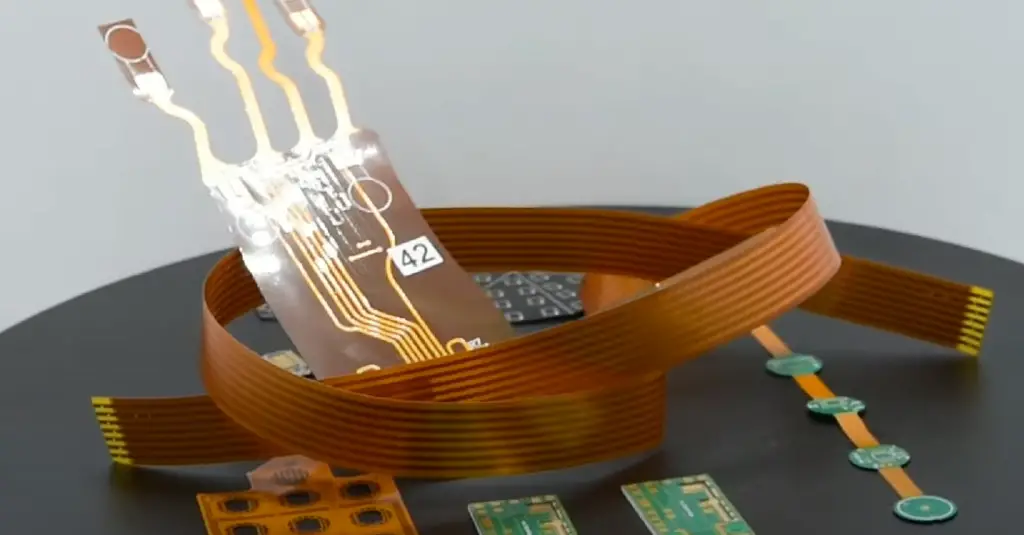
Flexible PCBs are particularly well-suited for use in implantable medical devices, including pacemakers and defibrillators. Their flexibility allows them to conform to the shape of the device, making them less obtrusive and more comfortable for the patient [5].
FAQ
1. What does flexible PCB mean?
This allows the PCB to bend and flex without breaking, making it ideal for use in applications where a traditional rigid PCB would not be suitable.
2. Why is flexible PCB used?
Flexible PCBs are used in a variety of applications where a traditional rigid PCB would not be suitable. This includes applications where the PCB needs to be able to bend or flex, such as in wearable technology, medical devices, and aerospace and military applications. Flexible PCBs can also be used in applications where space is limited, as they can be designed to fit into tight spaces more easily than rigid PCBs [6].
3. What is flexible PCB material?
Flexible PCBs are made up of several layers of flexible materials, including a substrate, copper traces, and insulation layers. The substrate material used in FPCBs is typically a flexible polymer, such as polyimide or polyester that can bend and flex without breaking. Copper traces are used to create the electrical connections between the components on the FPCB, and insulation layers are used to separate the copper traces and prevent short circuits.
4. What is the difference between rigid and flexible PCB?
The main difference between rigid and flexible PCBs is that rigid PCBs are made from rigid materials, such as fiberglass or ceramics, while flexible PCBs are made from flexible materials, such as polyimide or polyester. Rigid PCBs are ideal for applications where the PCB will not need to bend or flex, while flexible PCBs are better suited for applications where the PCB will need to bend or flex, or where space is limited.
5. How is a flexible PCB made?
Flexible PCBs are made using a similar process to traditional rigid PCBs but with the addition of flexible materials. The process typically involves creating a design for the circuit, applying the conductive traces to the substrate material using a variety of techniques, including etching, electroplating, or deposition, and then laminating the layers together to form the final circuit [7].
6. What are the characteristics of flexible PCB?
The characteristics of a flexible PCB include its ability to bend and flex without breaking, its ability to fit into tight spaces, its lightweight and compact size, and its ability to handle high-density circuits with complex designs.
7. What are the different types of PCB?
The different types of PCB include single-layer, double-layer, multi-layer, flexible, rigid-flex, and high-density interconnect (HDI) PCBs.
8. What is PCB vs PCBA vs PWB?
A PCBA, or printed circuit board assembly, is the completed circuit board that has had components soldered onto it. A PWB, or printed wiring board, is another name for a PCB.
9. What color is flex PCB?
The color of a flexible PCB can vary depending on the materials used, but it is typically yellow or orange due to the use of polyimide or polyester substrates.
10. Why are PCBs no longer used?
PCBs are still widely used in many applications today. However, there are concerns about the environmental impact of PCBs due to their use of hazardous materials, such as lead and other heavy metals. As a result, there has been a push towards using more environmentally-friendly materials and manufacturing processes in the production of PCBs.
11. How many layers can a flex PCB have?
Flex PCBs can have varying numbers of layers, depending on the complexity of the circuit. They can have as few as one layer or as many as 20 or more layers. The number of layers will depend on the requirements of the specific application and the complexity of the circuit [8].
12. How thick is a flexible PCB board?
The thickness of a flexible PCB board can vary depending on the materials used and the requirements of the specific application. Generally, flexible PCBs are thinner than rigid PCBs, with typical thicknesses ranging from 0.05mm to 0.5mm. However, the thickness can be customized to meet the specific needs of the application.
13. How thick is flexible PCB copper?
The thickness of copper on a flexible PCB can vary depending on the requirements of the specific application, but it is typically much thinner than copper on a rigid PCB. The thickness of copper on a flexible PCB can range from 9 microns to 70 microns, with the most common thicknesses being 18 microns and 35 microns [9].
14. Which type of PCB is more economical?
Single-sided PCBs are generally the most economical type of PCB, followed by double-sided PCBs. Multi-layer PCBs, flexible PCBs, and rigid-flex PCBs are typically more expensive due to the additional manufacturing steps required.
15. How to make flexible PCB at home?
It is possible to make flexible PCBs at home using a variety of methods, including using a laser printer to transfer a circuit design onto a flexible copper-clad material and etching the circuit using an etching solution. Another method involves using a CNC machine to mill the circuit design into a flexible substrate material.
16. What are the 4 layers of PCB?
The signal layer contains the copper traces that make up the electrical connections between components. The power and ground plane layers provide a solid reference for power and ground connections, and the solder mask layer protects the copper traces and prevents the solder from flowing where it’s not needed.
17. What is a 4-layer vs 6-layer PCB?
A 4-layer PCB has four layers of copper and insulating material, while a 6-layer PCB has six layers of copper and insulating material. The additional layers in a 6-layer PCB can provide additional routing options and reduce the amount of signal interference, but they are typically more expensive to manufacture [10].
18. What type of PCB is SMT?
SMT, or surface mount technology, is a type of PCB assembly method that involves mounting components directly onto the surface of a PCB rather than inserting them through holes in the board. SMT components are typically smaller and more compact than through-hole components, making them ideal for use in applications where space is limited.
19. What is the shelf life of a PCB?
The shelf life of a PCB can vary depending on the materials used and the storage conditions. In general, a PCB can be stored for several years if it is kept in a dry and cool environment away from direct sunlight.
20. Are PCB and Arduino the same?
No, PCB and Arduino are not the same. PCB, or printed circuit board, is the physical board that contains the electrical connections between components. Arduino is a brand of microcontroller board that uses a PCB to connect its components together.
21. Are PCB and PWB the same?
Yes, PCB and PWB (printed wiring board) are the same things. They both refer to the physical board that contains the electrical connections between components.
22. What material is PCB printed circuit board?
PCBs can be made from a variety of materials, but the most common material used is fiberglass reinforced with epoxy resin. Other materials, such as polyimide, polyester, or ceramics, can be used for flexible or high-temperature applications. The copper traces on the PCB are typically made of copper foil.
23. Can I make a flexible PCB at home?
While it is possible to make a flexible PCB at home using a variety of DIY methods, it is generally recommended to work with a qualified PCB manufacturer for the highest level of quality and reliability.
24. What is the shelf life of a flexible PCB?
The shelf life of a flexible PCB can vary depending on a variety of factors, including storage conditions and the specific materials used in the construction of the PCB. It is generally recommended to follow the manufacturer’s guidelines for storage and handling to ensure the longest possible shelf life.
25. Is a PCB the same as an Arduino?
No, a PCB (printed circuit board) is a physical board that contains electrical components, while an Arduino is a microcontroller board that can be used to control various electronic devices.
26. Are PCB and PWB the same thing?
Yes, PCB (printed circuit board) and PWB (printed wiring board) are two terms that are often used interchangeably to refer to the same type of electronic circuit board.
27. What materials are used to make flexible PCBs?
Flexible PCBs are typically made using a combination of flexible substrate materials (such as polyimide), conductive materials (such as copper), adhesives (such as acrylic), and finishes (such as gold or silver).
Useful Video: What is FPC ? | PCB Knowledge
References
- https://www.proto-electronics.com/blog/flexible-pcbs-advantages-disadvantages
- https://www.pcbnet.com/blog/what-is-a-flex-pcb/
- https://www.raypcb.com/the-features%E3%80%81advantages-and-disadvantages-of-flexible-printed-circuit-fpc/
- https://www.rigiflex.com/faq/what-is-a-flexible-printed-circuit-board
- https://www.mclpcb.com/blog/flex-materials-construction/
- https://www.allflexinc.com/flexible-circuits/
- https://www.rs-online.com/designspark/flexible-printed-circuit-board-introduction-and-importance
- https://www.pcbway.com/pcb_prototype/What_is_Flexible_PCB.html
- https://www.sfcircuits.com/pcb-production-capabilities/flex-pcbs
- https://www.pcbgogo.com/Blog/Flexible_Printed_Circuits__Types__Benefits_and_its_Applications_by_PCBGOGO.html













Leave a Reply